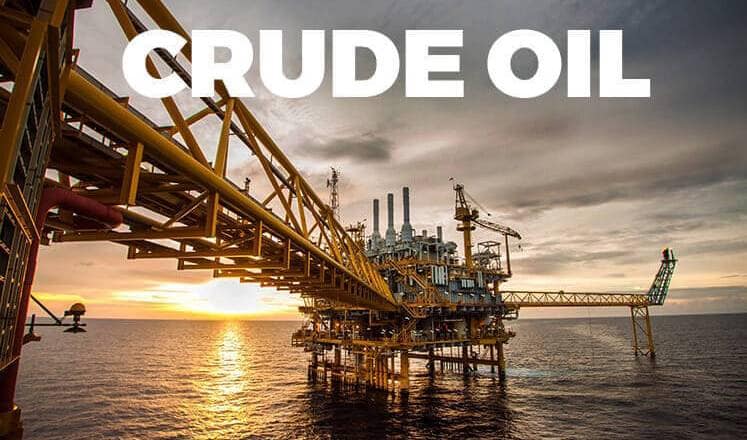Opec and Russia agreed on Thursday to make deep cuts to oil production, ending a weeks-long market-share war that put further pressure on prices already reeling from the biggest demand collapse in history.
But the market reaction was punishing after details of the proposal — which by 9pm in Vienna had not yet been formally agreed by Opec ministers — emerged.
Global benchmark Brent reversed a near 11 per cent rally to close down 4 per cent at $31.48 a barrel. Traders doubted the cuts would make up for the fall in demand resulting from the coronavirus pandemic and questioned whether non-Opec producers would contribute.
The oil producers agreed a production cut of 10m barrels a day — by far the biggest supply deal in history and equivalent to roughly 10 per cent of pre-crisis demand — following pressure from US President Donald Trump. The cuts would diminish over time, ending in April 2022, according to the plan.
Saudi Arabia and Russia, the two biggest producers in the deal, agreed between them to cut about 5m b/d. Other Opec+ producers agreed to remove an additional 5m b/d. The cartel called on the US and Canada, among other countries, to cut another 5m b/d when G20 energy ministers hold an extraordinary meeting on Friday.
Ahead of the G20 talks, Mr Trump said he had spoken with Saudi Arabia’s King Salman and Russia’s Vladimir Putin on Thursday evening, adding that Opec+ countries were “getting close to a deal”.
On oil prices, he said, “I think it’s really hitting bottom”. He added: “We’ve had a tremendous day,” referring in part to the energy talks.
While hopes for a global supply deal have supported prices for the past week, traders sold as the outcome became clearer, judging it would not be enough to offset the loss of nearly a third of global consumption as a result of lockdowns and travel bans. Global demand was more than 100m b/d before the pandemic.
Read More : Crude Oil MCX Intraday Hit High 2056 – Fast Join Neal Bhai Reports
Opec secretary-general Mohammad Barkindo described coronavirus as an “unseen beast” that had created a “horrifying” supply and demand outlook for the oil industry “beyond anything we have ever seen before”.
Brent crude at one stage rallied to a high of $36.40 a barrel shortly after the meeting started, on reports Russia and Saudi Arabia could lead the cartel in cuts of as much as 20m b/d.
Instead, Riyadh and Moscow — which traded barbs in the days leading up to the videoconference — agreed after several hours discussion each to cut output by around 22 per cent, from a baseline of 11m b/d. Before the price war began, Saudi Arabia was producing about 9.7m b/d, but swiftly ramped up supply to a record high of 12.3m b/d.
“A 10m b/d headline cut begs some hard questions,” said Bill Farren-Price at RS Energy Group. “The biggest one is — why would Russia and Saudi Arabia continue to underwrite the US shale patch at considerable cost to their own exports and with little guarantee on the price impact of such a move? This will put even more pressure on the US to pledge its own cuts tomorrow at the G20.”
The proposal would see the cuts gradually ease, with 10m b/d removed through May and June, before cuts drop to 8m b/d to the end of the year and 6m b/d thereafter until April 2022.
The failure to prop up the market will spread further fear in an industry already struggling to adapt to a more than 50 per cent drop in prices since the start of the year.
The US shale sector faces widespread bankruptcies, while the wider industry fears forced shutdowns of production, which can cause long-term damage to fields. Storage capacity is predicted to be overwhelmed globally within months. Millions of jobs across the globe could be lost, while the budgets of poorer producers like Nigeria and Angola are decimated just as they need to fund their response to the pandemic.
Mr Trump put pressure on Russia and Opec’s largest member Saudi Arabia to forge a pact to cut 10m-15m barrels a day of output, decrying a price war launched after the two fell out in early March over how to respond to the crisis. Both Riyadh and Moscow have insisted other countries, including the US, participate in the new deal.
US benchmark West Texas Intermediate posted a peak-to-trough swing on Thursday of more than $5 a barrel, hitting a high of $28.36 before falling to $23.24, down more than 5 per cent on the day.
The US has indicated that its own production is likely to fall anyway because of the precipitous drop in prices, but is not in a position to mandate cuts due to antitrust laws even if it desired too.
Russian officials had pushed back against what they saw as the US and other countries such as Canada dressing up natural production declines, but have appeared to acquiesce to this reality on Thursday.
The full details of the final deal, expected to be announced after the G20 meeting on Friday, have the potential to further unnerve markets with many traders fearing a diplomatic fudge.
Helima Croft at RBC Capital Markets said she expected any deal “will yield a broad framework agreement to curb output by a big headline number” but that it was likely to “be short on hard specifics such as duration, implementation timeline, and enforcement mechanisms”.
Part of the plan is to ask consuming countries at the G20 meeting on Friday to contribute by buying up cheap oil for their strategic stockpiles, providing a boost to demand, and then including those barrels within a collective 15m b/d target, according to people familiar with the talks.
